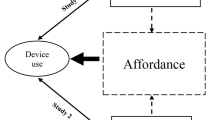Abstract
The aim of the present study is to identify influential factors of travel intention under the context of highly developed IT society today. Due to the development of IT and diversified ways of technology convergence, individual travelers become highly efficient in travel-related information processing. As predicted, the results of both Korean and Chinese samples show that acquaintance recommendation, autonomy, relatedness, and technology self-efficacy are significantly related with the travel information acquisition and travel intention. In this study, smartPLS, which is widely used in social science, was used. PLS is a useful analytical tool for determining causality between variables. The present study will make practical contributions by enhancing the accuracy of travel recommendation services from the perspective of technology convergence. The results of this study are expected to provide guidelines for travel-related companies to develop personalization and customization services through big data and artificial intelligence techniques when they want to design travel recommendation systems.



Similar content being viewed by others
References
Li G, Park EM, Jin SJ (2019) The impacts of personal traits on knowledge discovery behaviors via mobile SNS. Pers Ubiquit Comput:1–12. https://doi.org/10.1007/s00779-019-01240-1
Cui X, Yang N, Wang Z, Hu C, Zhu W, Li H et al (2015) Chinese social media analysis for disease surveillance. Pers Ubiquit Comput 19(7):1125–1132
Song GY, Cheon Y, Lee K, Lim H, Chung KY, Rim HC (2014) Multiple categorizations of products: cognitive modeling of customers through social media data mining. Pers Ubiquit Comput 18(6):1387–1403
Park ST, Oh MR (2019) An empirical study on the influential factors affecting continuous usage of mobile cloud service. Clust Comput 22(1):1873–1887
Jin H, Miao Y, Jung JR, Li D (2019) Construction of information search behavior based on data mining. Pers Ubiquit Comput:1–13. https://doi.org/10.1007/s00779-019-01239-8
2019 MarketHub Asia, https://www.themarkethub.com/asia/en/home. Accessed 8 Apr 2020
Travel Trends: 12 Opportunities for the Travel Industry. https://www.revfine.com/travel-trends/. Accessed 8 Apr 2020
Chip MC Jr, Simonian PT, Agnew SG, Mann FA (1996) Radiographic recognition of the sacral alar slope for optimal placement of iliosacral screws: a cadaveric and clinical study. J Orthop Trauma 10(3):171–177
Reichheld FF (2003) The one number you need to grow. Harv Bus Rev 81(12):46–55
Granovetter M (1983) The strength of weak ties: a network theory revisited. Sociol Theory:201–233. https://doi.org/10.2307/202051
Dichter E (1966) How word-of-mouth advertising works. Harv Bus Rev 44(6):147–166
Richins ML (1983) Negative word-of-mouth by dissatisfied consumers: a pilot study. J Mark 47(1):68–78
Kim JH, An EM, Kim GH (2006) Effects of information directionality and types of information based on tie strength between senders and receivers on senders` word-of-mouth intention. Korean Journal of Consumer and Advertising. Psychology 7(1):93–112
Lee J, Doh SJ, Hwang JS (2011) The effectiveness of online WOM (Words-of-Mouth): the role of direction, usefulness, and IR (Interaction Readiness). Korean Journal of Consumer and Advertising. Psychology 12(2):283–307
Roca JC, Gagné M (2008) Understanding e-learning continuance intention in the workplace: a self-determination theory perspective. Comput Hum Behav 24(4):1585–1604
Dempster JS (1994) Autonomy: a professional issue of concern for nurse practitioners. Nurse Pract Forum 5(4):227–232
Freidson E (1994) Method and substance in the comparative study of professions. In Conference on Regulating Expertise, Paris
Reeve J (2002) Self-determination theory applied to educational settings
Boggiano AK, Flink C, Shields A, Seelbach A, Barrett M (1993) Use of techniques promoting students’ self-determination: effects on students’ analytic problem-solving skills. Motiv Emot 17(4):319–336
Deci EL, Ryan RM (2002) Overview of self-determination theory: an organismic dialectical perspective. Handbook of self-determination research, 3-33
Levesque C, Zuehlke AN, Stanek LR, Ryan RM (2004) Autonomy and competence in German and American university students: a comparative study based on self-determination theory. J Educ Psychol 96(1):68
Standage M, Duda JL, Ntoumanis N (2003) A model of contextual motivation in physical education: using constructs from self-determination and achievement goal theories to predict physical activity intentions. J Educ Psychol 95(1):97
Bandura A (1986) The explanatory and predictive scope of self-efficacy theory. J Soc Clin Psychol 4(3):359–373
Zhang X, Han X, Dang Y, Meng F, Guo X, Lin J (2017) User acceptance of mobile health services from users’ perspectives: the role of self-efficacy and response-efficacy in technology acceptance. Inform Health Soc Care 42(2):194–206
Pajares F (1996) Self-efficacy beliefs in academic settings. Rev Educ Res 66(4):543–578
Honicke T, Broadbent J (2016) The influence of academic self-efficacy on academic performance: a systematic review. Educ Res Rev 17:63–84
Compeau DR, Higgins CA (1995) Computer self-efficacy: development of a measure and initial test. MIS Q 19(2):189–211
Eastin MS, LaRose R (2000) Internet self-efficacy and the psychology of the digital divide. J Comput Mediated Commun 6(1):JCMC611
Ko SH, Yeo JS, Kim YJ, kim JY (2007) Moderating effect of BRQ in the influence of parent-extension similarity on extension evaluations. J Bus Res 22(4):231–248
Prahalad CK, Ramaswamy V (2004) Co-creation experiences: the next practice in value creation. J Interact Mark 18(3):5–14
Park ST, Park EM, Seo JH, Li G (2016) Factors affecting the continuous use of cloud service: focused on security risks. Clust Comput 19(1):485–495
Chin WW, Gopal A (1995) Adoption intention in GSS: relative importance of beliefs. ACM SIGMIS Database 26(2-3):42–64
Fornell C, Larcker DF (1981) Evaluating structural equation models with unobservable variables and measurement error. J Mark Res 18(1):39–50
Nunnally JC, Bernstein IH (1967) McGraw-Hill series in psychology. Psychometric theory. McGraw-Hill, New York
Thompson R, Barclay DW, Higgins CA (1995) The partial least squares approach to causal modeling: personal computer adoption and use as an illustration. Technology studies: special issue on Research. Methodology 2(2):284–324
Falk RF, Miller NB (1992) A primer for soft modeling. University of Akron Press. https://www.researchgate.net/publication/232590534_A_Primer_for_Soft_Modeling. Accessed 06 Jun 2020
Author information
Authors and Affiliations
Corresponding author
Additional information
Publisher’s note
Springer Nature remains neutral with regard to jurisdictional claims in published maps and institutional affiliations.
Rights and permissions
About this article
Cite this article
Li, G., Seo, JH. & Park, EM. Factors enhancing independent tourists’ experience through convergence of smartphone-based services and information searching. Pers Ubiquit Comput 26, 447–458 (2022). https://doi.org/10.1007/s00779-020-01473-5
Received:
Accepted:
Published:
Issue Date:
DOI: https://doi.org/10.1007/s00779-020-01473-5




